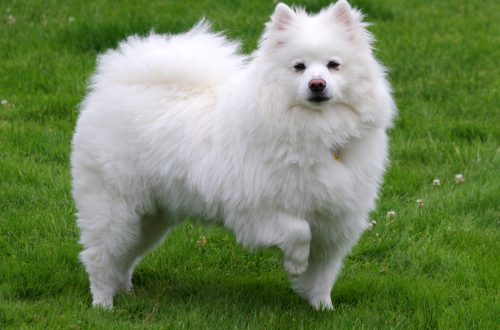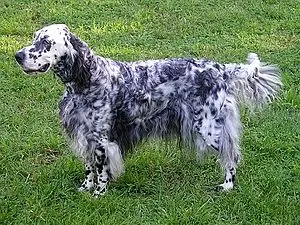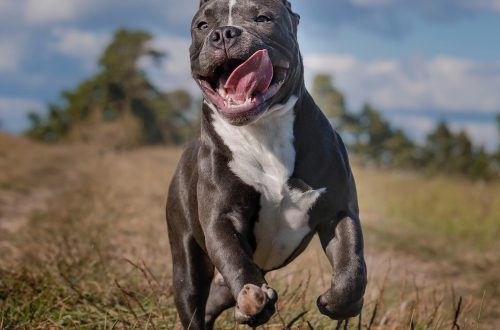
Basenji
Contents
Characteristics of Basenji
| Country of origin | Central Africa |
| The size | small |
| Growth | 40-43 cm |
| Weight | 9–12 kg |
| Age | 14–16 years old |
| FCI breed group | spitz and breeds of primitive type |
Brief information
- They rarely bark, preferring to make hissing and grumbling sounds;
- One of the oldest dog breeds, with a history of over 5,000 years;
- It is considered a breed that does not cause allergies.
The Basenji is a dog that came to our continent from the very heart of Africa. Interestingly, this breed appeared on its own, without human intervention. The appearance and character traits of its representatives were shaped by nature itself. Only natural selection has made the Basenji what it is today. And this is where all the charm and value of such amazing dogs lies. In our country, these dogs are quite rare, but every year their popularity is growing.
Pros and Cons of the Basenji
Basenji Benefits:
- Representatives of this breed have an amazing feature – they do not bark. This fact will definitely please your neighbors. Due to the special structure of the larynx, dogs simply do not know how to do this. Therefore, the usual “woof” you will never hear. But this does not mean that the dog will always be silent. Basenjis make a lot of sounds, including whining and howling. The latter can be quite loud.
- Short hairline reduces grooming to a minimum. The absence of an undercoat guarantees cleanliness in your home, as representatives of this breed practically do not shed.
- Many consider this dog hypoallergenic. It cannot be said with certainty that it will not cause any reaction in a person who is prone to allergies. But these dogs leave behind much less hair than other breeds.
- In addition to the fact that Basenjis do not shed, they also do not smell. They do not have the characteristic dog odor that often comes from many dogs.
- The small size allows you to keep the animal in a small city apartment.
Basenji Disadvantages:
- They have a pronounced hunting instinct. The bush dog, as the basenji is also called, without hesitation begins to pursue the animal he has seen. At this point, the pet will not hear your commands, even if it has completed a training course. Therefore, representatives of these breeds are dangerous to let off the leash and lose sight of, as the dog can run away and disappear.
- These dogs do not like water. If you dream of a pet with which you can swim in the sea or pool, then “basya” will not work for these purposes. In the memory of these dogs, there is a strong relationship between water and danger, as many crocodiles live in African waters.
- They do not tolerate cold well, so for winter walks you will have to purchase warm overalls or a vest. Keeping these dogs outdoors is also not suitable.
- Character traits make the Basenji not the easiest dog to train. These are self-confident and freedom-loving creatures. Therefore, such a dog is not suitable for a novice owner.
- Since the breed is quite rare and unusual in our open spaces, the cost of puppies of these dogs is high.
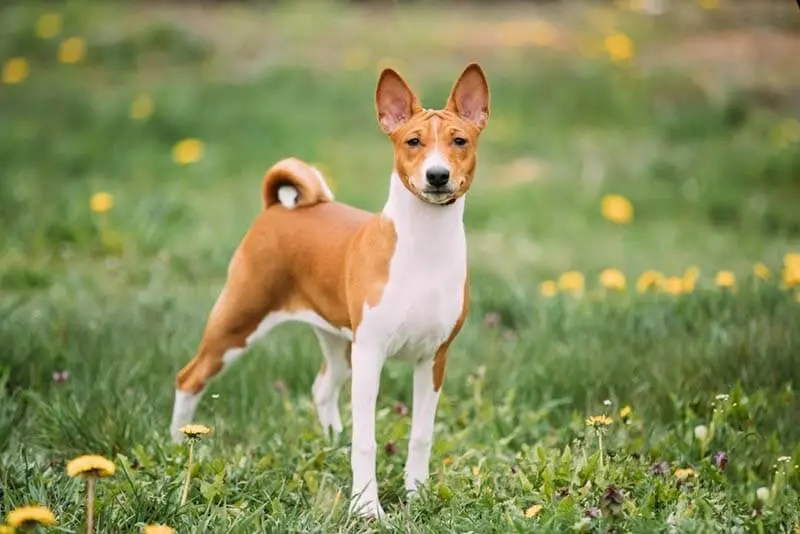
Description of the basenji
The International Kennel Club registered the breed at number 43. According to the classification, the Basenji belong to the fifth group, which includes Spitz and primitive species. These are harmoniously built animals with a lean body with well-developed muscles and correct proportions.
Head
The skull of the dog is flattened, narrow. Its length slightly exceeds the length of the muzzle. The head is clearly defined, the cheekbones stand out and gradually taper towards the tip of the nose. The stop is clearly visible. There are characteristic skin folds on the forehead. They are more pronounced when the dog is alert or excited. The nose is not large, according to the standard it should be black.
Eyes
The eyes sit obliquely on the skull and are almond-shaped. The iris is painted in a dark shade. The look is meaningful, interested.
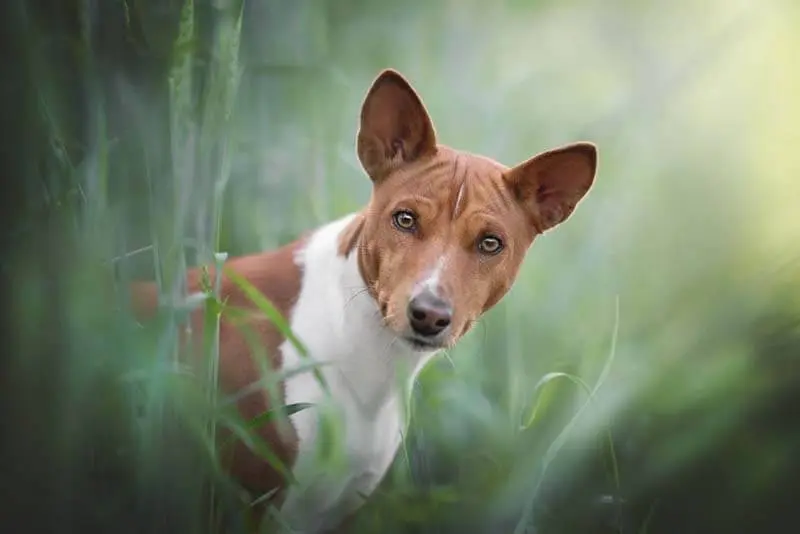
Ears
The ears are small, gradually tapering towards the tip, which is pointed. They sit high on the skull, have a slight forward inclination. The ends of the ears are located closer to the center of the muzzle than to the base.
Neck
The neck is of sufficient length, well muscled, but does not look massive. Worth high. It tapers slightly towards the head. The scruff is clearly visible and emphasizes the characteristic curve of the neck.
Frame
The body is built harmoniously and proportionately. The back is short and straight. The chest is oval in shape, deep, the ribs are convex and pronounced. The line of the abdomen does not sag. The loin is short.
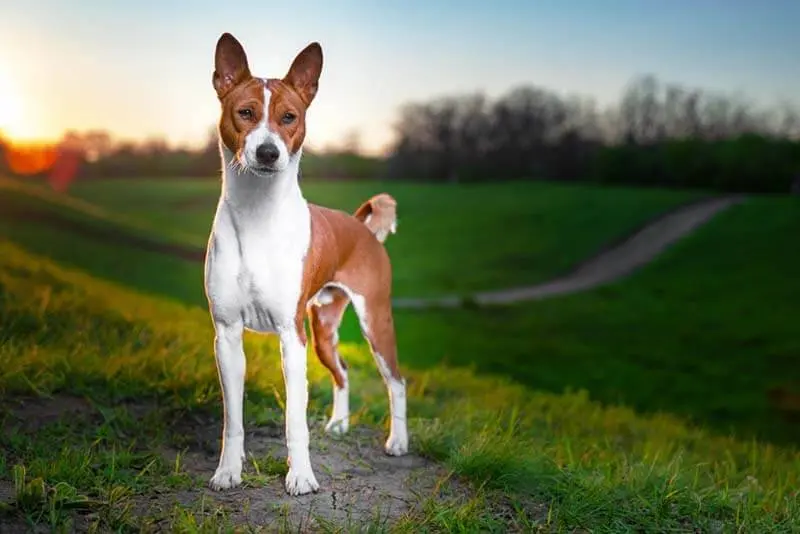
Tail
The tail is set high, twisted into one or more rings that lie on the lower back. The gluteal muscles protrude strongly beyond the line of the base of the tail, therefore they appear overdeveloped.
limbs
The forelimbs are distinguished by elegance and refinement. The pasterns are completely straight and quite flexible. The shoulder blades are well muscled, but do not look too massive. Elbows are pointing back.
The hindquarters are well muscled, with powerful and long lower legs. The hocks are lowered low, stand parallel to each other.
The paws are oval in shape, the fingers are collected in a tight lump. The pads are fleshy, the nails are not long.
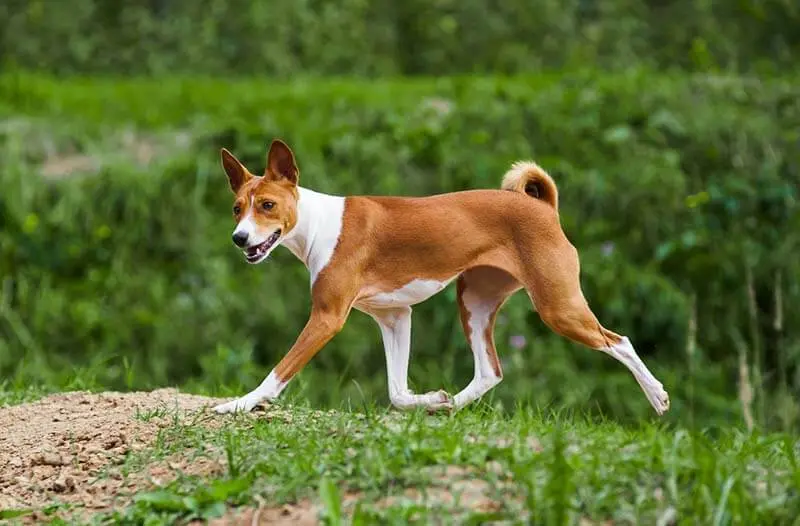
Gait and movement
Basenji’s gait is graceful and confident. When walking, the dog brings the limbs forward in a straight line. Therefore, the movements are rhythmic, and the steps are long.
wool cover
The coat is short, close to the body. It is soft and pleasant to the touch. The hair is thin and shiny. The undercoat, as such, is absent.
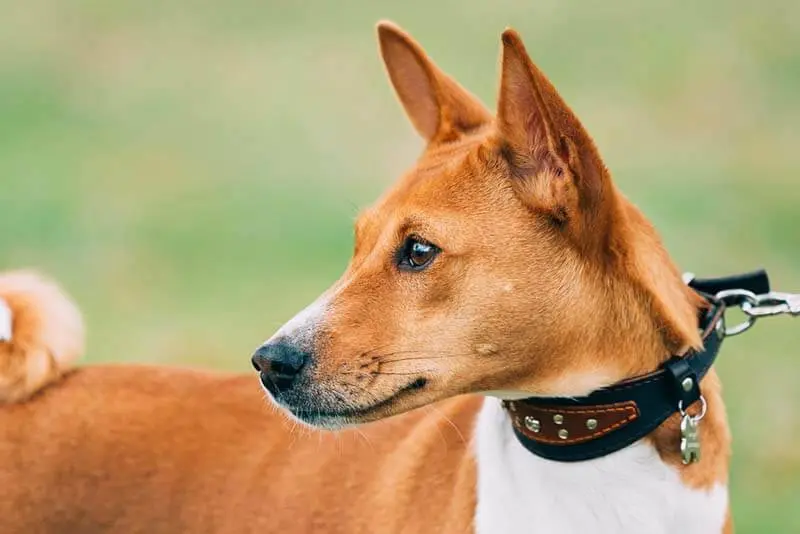
Color
According to the breed standard, the basenji color can be:
- black and white;
- white-red;
- black and white with beige tan;
- white-brown;
- black.
Not so long ago, in 2000, the brindle color was officially recognized. Preference is given to those dogs whose black stripes are more pronounced. White marks should be present on the chest, paws and tip of the tail of the animal.
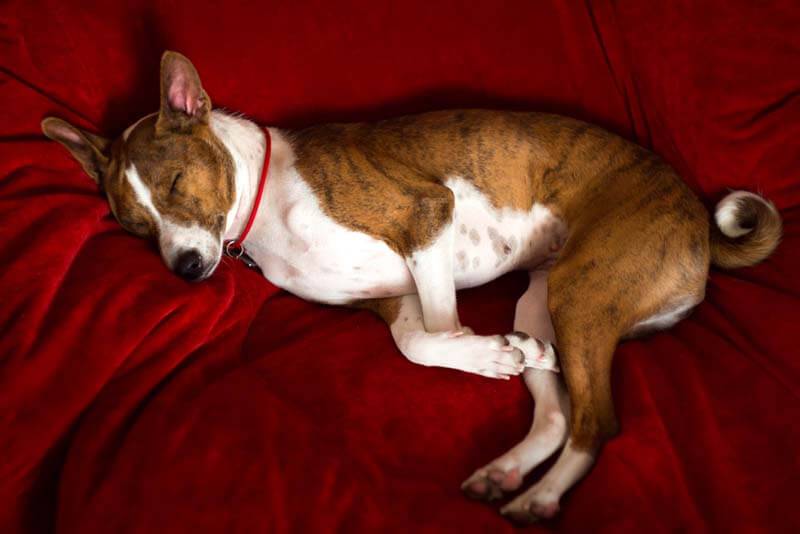

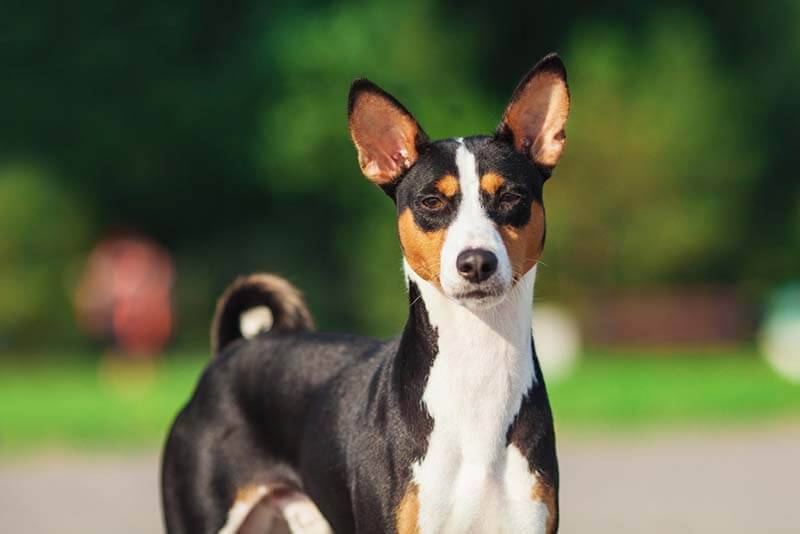
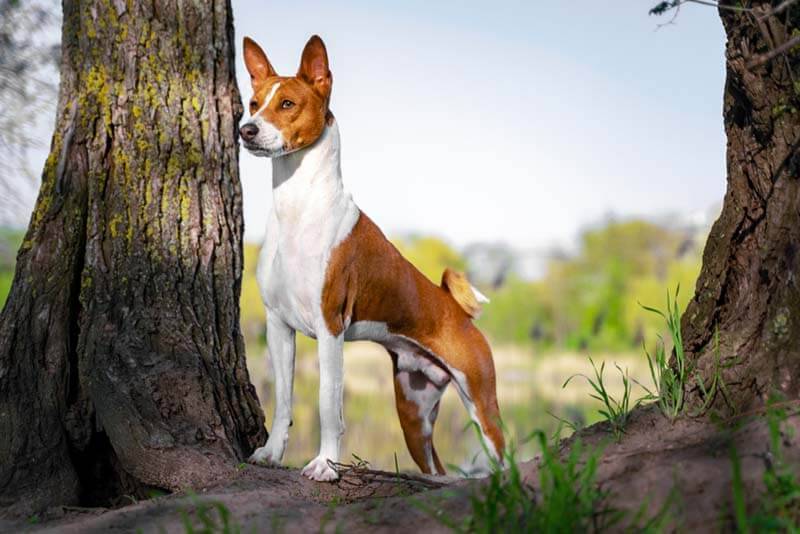
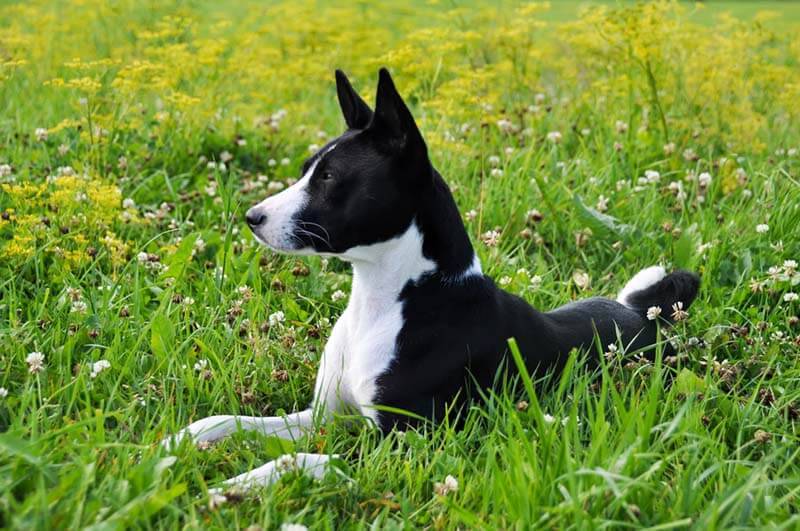
Photos of basenjis of different colour
Size and weight
Basenjis are small dogs. Males reach 43 centimeters at the withers, and weigh about 11 kilograms. Bitches are lower and smaller. Their height is around 40 centimeters, and their weight rarely exceeds 10 kilograms.
Basenji character
These dogs are hunting dogs, therefore, the traits inherent in the representatives of the breed are manifested in their character. This is energy, temperament, activity, a high level of intelligence.
Very developed in these dogs is such a quality as fidelity. It is noteworthy that gaining the trust of the Basenji is extremely difficult. If this happened, then you simply cannot find a more reliable comrade and companion. He, as they say, will follow you into fire and water. Such attachment to the owner can turn into a tragedy for the dog if he decides to leave it. “Basya” simply will not survive the change of owner. The dog is always suspicious of strangers, wary. Although open aggression never shows.
This breed belongs to the primitive. But this does not detract from her mental abilities or external features. It’s just that a person did not make any adjustments to its formation. If most of the breeds appeared through many years of selection, then the Basenji is an authentic and original dog. All her qualities are bestowed by nature. These dogs are independent, savvy, cunning and self-confident. All these character traits helped them survive hundreds of years ago.
Connoisseurs of the breed say that each dog is an individual, and he has an almost unique set of qualities. Therefore, in education it is necessary to look for a special approach to each dog. Basenji can not be trained “under the blueprint.” First, the owner will have to get to know his pet, study it thoroughly, and then look for an approach to it. Of course, this greatly complicates the training. But such uniqueness is a feature of the breed. It also shows a high level of animal intelligence. It is he who allows you to establish an inextricable bond between the pet and its owner, which is impossible to break. But the owner of the dog must understand that it is impossible to abuse such dedication of the dog. It must be treated with respect and love. Then the dog will pay the owner with the same coin.
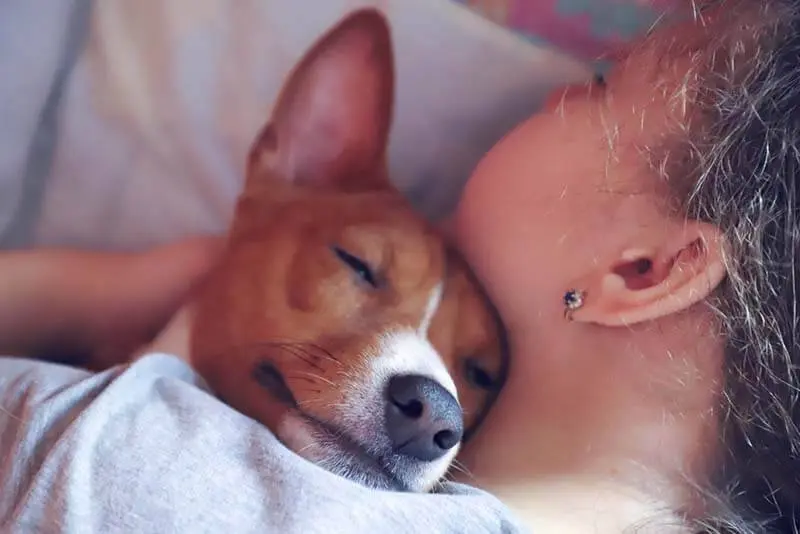
Relations with other animals in representatives of this breed develop in different ways. With dogs “basya” will get along without any problems. With cats, he can also live peacefully under the same roof, but on condition that the tailed one appeared in the house later than the dog. But one cannot count on friendship with birds and rodents. For the basenji, this is just another prey. Do not doubt that when you lose your vigilance even for a minute, a parrot or a hamster will become dinner for the “basi”.
Despite their small size, these dogs can make good defenders. In this they are helped by the same devotion to the owner. Therefore, the Basenji will not give offense to his person. But the dog is not suitable for the role of a nanny. The dog will take part in the active games of children, but he will not have enough patience to endure their pranks. Therefore, “basya” is more suitable for families without children or for those parents whose children have already grown up.
Every future basenji owner needs to remember one not the most attractive character trait of these dogs. The fact is that they have a habit of picking up food from the ground. Dog breeders call this “jackal”. In representatives of this breed, it is in the blood, so it will be quite difficult to wean from such a habit. But the effort is worth making, as uncontrolled eating from the ground can be dangerous to the health of the dog. If the animal is still trying to grab something “delicious” during a walk, then it is better not to let it off the leash and keep it under close attention.
The Basenji is often referred to as the African Barkless Dog. Indeed, these dogs do not know how to bark, like representatives of other breeds. They convey all their emotions with the help of other sounds. For many people, they may seem unusual and funny. This is a kind of rumbling and whining. If you live in an apartment building, then this feature can be perceived as an advantage. But we should not forget that basenjis can howl and do it quite loudly when they are left at home all alone. Your neighbors won’t thank you for this.
Despite all these features, basenjis remain dogs. And all dogs are ready to be faithful and devoted companions of their owners, if they give them love and care in return.
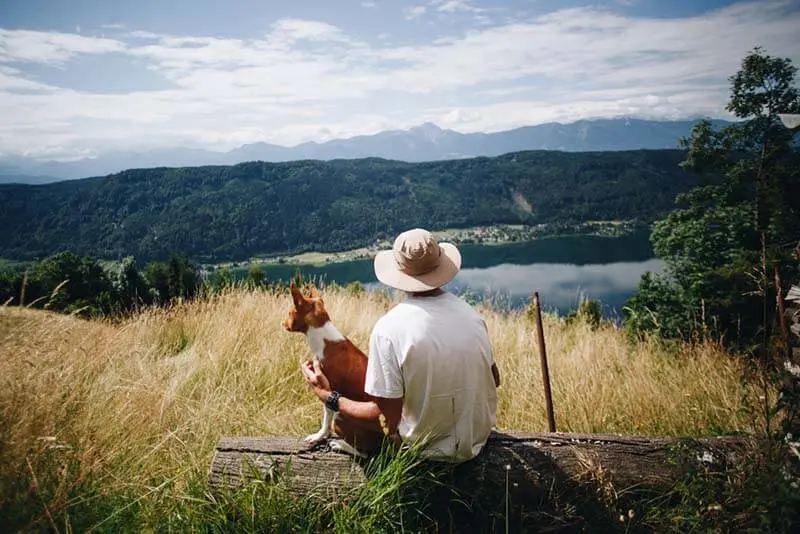
Education and training
Most experts say that basenjis are difficult to train. And partly this is true. Representatives of this breed are really not eager to carry out the commands of the owner, they are not very interested in training, it is difficult for them to concentrate on training. This behavior is due to the fact that the basenjis belong to the primitive species of breeds that nature itself bred, without human help. But this does not mean that the intelligence of the dogs has suffered. The dog can make decisions on its own without the prompting of the owner, it’s true. But a consistent and stubborn owner will definitely be able to raise a pet and teach him any tricks and commands. It just might take more time and effort. It is important to take into account the characteristics of the breed and find the “key” to your pet.
Basenjis are independent dogs that always keep apart, on their own. Therefore, in training, you need to focus on the call. Your pet should hear the command “Come to me!” from the first time. and fulfill it. To bring this action to automatism, you have to sweat. After all, “basya” is sure that it is better for him to know where to be at one time or another. He sincerely does not understand why he should deny himself chasing a cat or eating carrion. Therefore, many representatives of this breed walk exclusively on a leash. Owners are trying to keep their pet safe. After all, if he starts chasing prey, a person will not physically be able to catch up with the dog.
Another way that you can attach a pet to yourself is to interest in your company. The dog must realize that next to the owner he will have a lot of fun. Therefore, arrange outdoor games more often, come up with “quests” for your pet, take a ball, rubber bone or Frisbee with you for a walk. Reward your dog with treats, encourage with kind words.
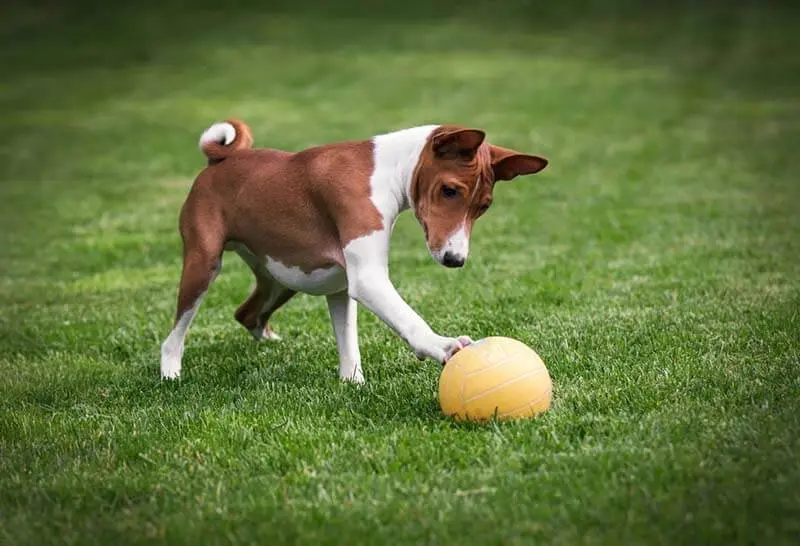
It is important to learn how to limit the freedom of your pet in such a way that he is not subjected to violence. After releasing the leash, wait until the dog has gone a long distance, then stop. The dog must also stop to loosen the tension on the tape measure. And when you give him the command to come up, the “basya” will move in your direction. So you can “kill two birds with one stone” at once – you will train your pet to call and limit his freedom without causing him discomfort and pain. In addition, the dog will understand who is leading in your pair. And for the basenji it is very important to feel “alpha” in its owner.
The ingenuity of the dog quickly allows her to understand any rules. By limiting actions and rewarding the right actions with treats, you take control of the dog’s behavior.
Although the upbringing of “basi” should be guided by an individual approach, there are some recommendations that should be taken into account in the training process:
- Be a fair host. If the animal performed the trick or command correctly, it should be thanked for it.
- Practice regularly. This should become your habit. At the same time, it is better to practice skills in different conditions and places – both at home and on the street.
- Show endurance and patience. Forget screaming and violence. This only injures the dog’s psyche, you will never achieve obedience by beating. Maximum – you will see fear and hatred in the eyes of the pet, and also destroy trusting relationships with the animal.
- Combine individual and group lessons.
As soon as the puppy appears in your house, start training him to refuse unwanted food from the ground. When the baby eats food, climb into his mouth and take him away. If the dog begins to growl, then firmly stop this behavior. The dog, when it grows up, will get used to such actions and will not perceive them with hostility. And there will be much less problems with “jackals”.
Show your dog who’s in charge. Therefore, never give way to the dog, do not move away if he blocks your path. Give the animal enough attention. If the “basya” gets bored, then your housing will be in jeopardy. A pet can arrange a real mayhem. But, in fact, it will be you who will be to blame for it, since the basenjis do this not out of harm, but from a lack of attention.
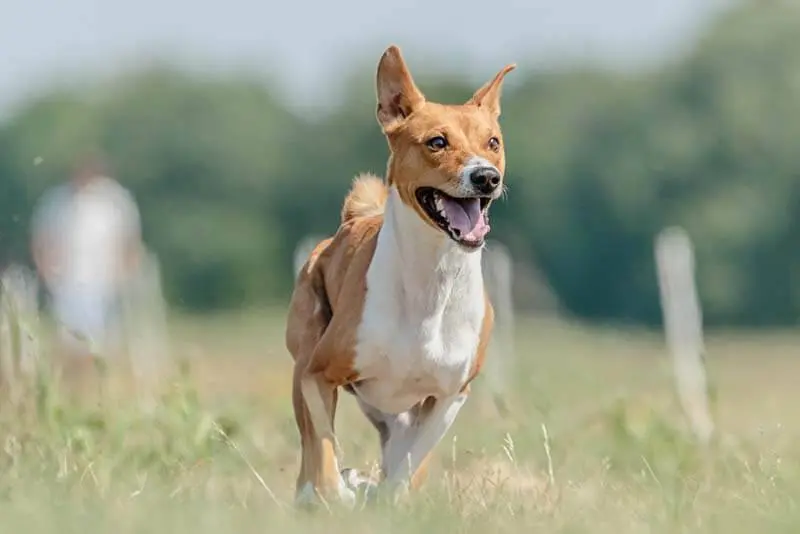
Basenji content
A representative of this breed can be kept in an apartment, while the dog will not experience any inconvenience. Suitable for her and a country house. But only on condition that the dog will live in the house itself, and on the site – only walk in his free time.
Caring for a basenji is not difficult. You don’t have to brush your pet for hours. A big plus is that the characteristic smell of a dog does not come from his coat, as from many other breeds. But the puppies need to pay more attention. Their coat is brushed several times a month to remove dead hairs.
African dogs are very important exercise. So get ready to walk often and actively. With her, it will not be possible to walk slowly along the alleys of the park. It’s good if you find a fenced area where you can let the dog off the leash so that he runs around and enjoys freedom.
Regular ear examinations are required. They must be cleaned as they become dirty with a cotton swab. Keep an eye on the claws as well. If they are too long, they will cause a lot of inconvenience to the dog and can even lead to injury. Therefore, the claws are shortened with a nail cutter, and the sharp edge is processed with a nail file.
A very unusual feature of the Basenji lies in their ability to wash themselves like a cat. That is why the muzzles of these animals are always clean. If the dog is dirty, then the first thing she will do is hygiene. But you can’t drag “basya” into the bathroom. Representatives of this breed have had a fear of water since ancient times. The fact is that African reservoirs were always teeming with alligators, so the dogs tried to bypass them. This is firmly ingrained in the head of dogs, so modern basenjis have not learned to enjoy bathing.
Representatives of this breed have a unique talent – to climb to great heights with lightning speed. Therefore, it is better to immediately wean your pet from climbing onto the sofa and table, begging for food. The dog should always eat in the same place.
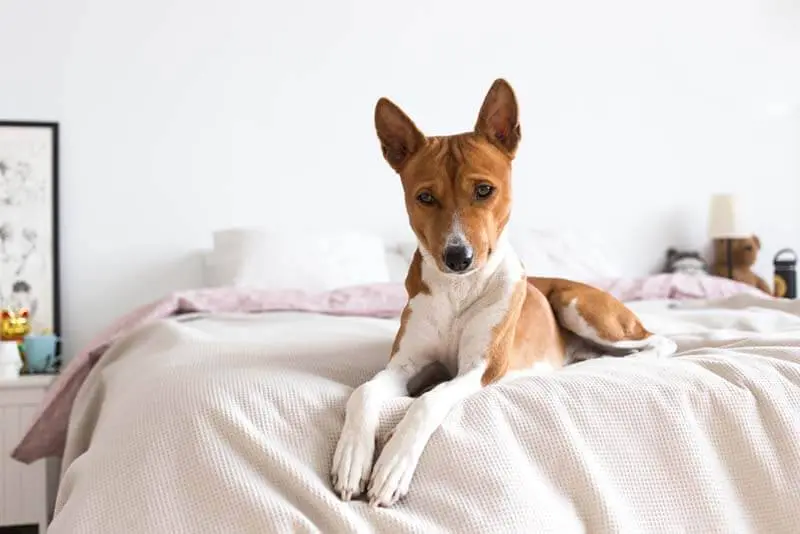
Food
In order for your pet to be healthy and feel good, it is important to properly organize his diet. The best choice for a basenji is a quality industrial feed. You can stop at the dry version or buy canned food, as well as combine both types. The industrial diet contains all the nutrients, minerals and vitamins necessary for the animal. Manufacturers took care to balance it as accurately as possible. Plus, it’s very convenient. After all, such food is always at hand, it is easy to store, it does not require preparation.
Give preference to premium and super-premium food. They include a large amount of natural meat, as well as healthy fats, cereals and vegetables. If you have chosen dry food, then provide the animal with round-the-clock access to clean water.
Do not feed the dog from the common table. This is wrong from the point of view of education, as the animal will get used to begging for food and will bother you and your guests. In addition, such food is not only not healthy for the dog, but can also be harmful to its health. Sweets, smoked meats, fried and fatty – all this is strictly prohibited. It is important not to overfeed your dog. Basenjis are hunters by nature, so they need to constantly experience a slight feeling of hunger.
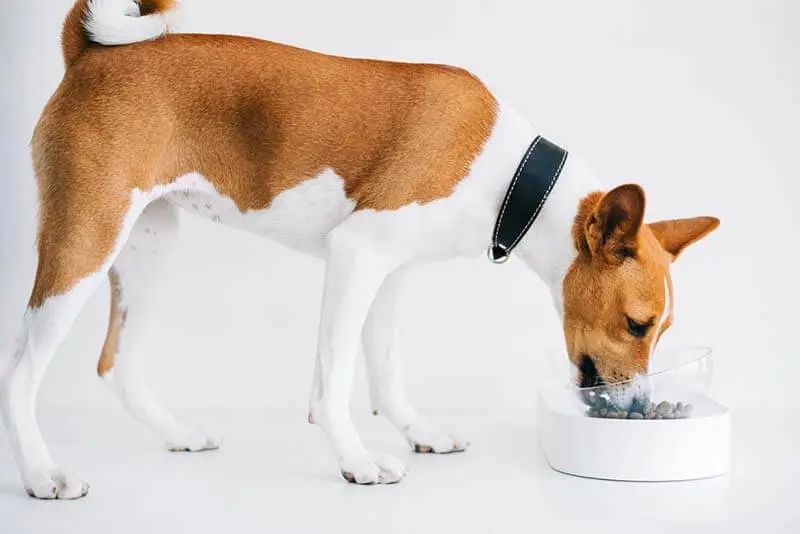
Basenji health
Representatives of this breed are distinguished by good health. But there are diseases to which basenjis are more predisposed. These include:
- Fanconi syndrome. With this disease, the kidneys suffer, their filtering function is disturbed. All the necessary vitamins and amino acids leave the body with urine, which leads to thinness and dehydration. The pathology is inherited. If you do not engage in treatment, then death cannot be avoided. And this disease manifests itself most often between the ages of five and seven years.
- Hypothyroidism. Violation of the thyroid gland leads to weight gain, decrease in body temperature, deterioration of the structure of the coat, swelling of the limbs.
- Retinal atrophy. Another genetic disease that leads to complete blindness of the animal.
The future basenji owner should remember that these dogs are more prone to picking up garbage and other unwanted food from the ground. Therefore, there is always a risk of poisoning. In order to have time to provide first aid to the animal, it is important to always have antidotes on hand.
It is necessary to follow the schedule of vaccinations that can protect the dog from many deadly diseases. Once a quarter, basenjis are dewormed, and in the warm season they are treated for fleas and ticks.
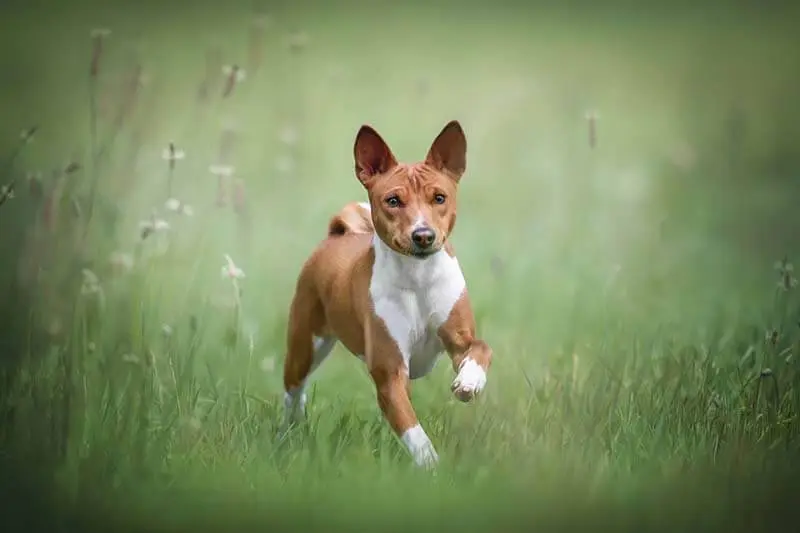
History reference
Historians believe that the Basenji appeared at least six thousand years ago. Archaeologists have managed to find a variety of things depicting dogs that are very similar to modern African dogs. Jewelry and household items were found in various burials, including the tomb of Tutankhamun. The mummies of these dogs were placed next to the Egyptian ruler to guard him in the afterlife.
The homeland of the Basenji is considered to be Central Africa. The tribes that lived in this area used dogs to hunt animals. Why these dogs cannot bark is not known for certain. It is difficult to determine whether such behavior was a cause or a consequence of hunting “service”.
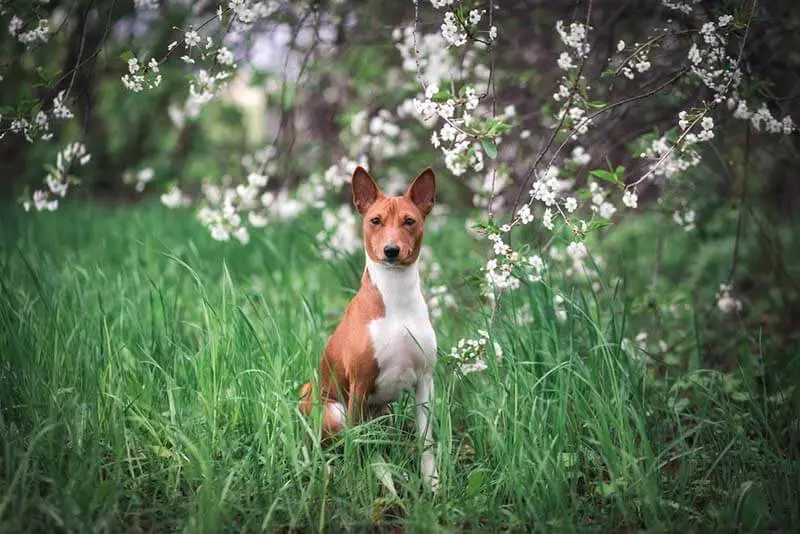
From Central Africa, the Basenji came to Egypt, where they immediately gained immense popularity. They were credited with magical properties, believing that dogs are able to drive away evil spirits.
In 1937, representatives of the breed were first shown at an English exhibition. In the same year they were brought to the United States. After the Second World War, this breed began to gain popularity. This was facilitated by cinema and literature, where basenjis were mentioned more and more often. These dogs began to appear in royal families around the world.
On the territory of Our country, “Africans” appeared in 1990s. Very bright representatives of the breed were brought to our country, so their descendants adequately withstand competition even among representatives of foreign nurseries. But basenjis have not yet received wide distribution, so for many they have remained a curiosity.
Basenji photo

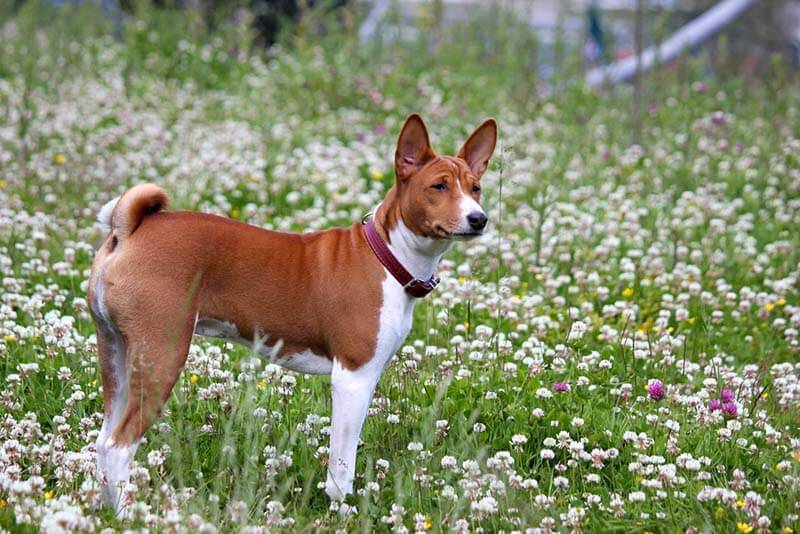

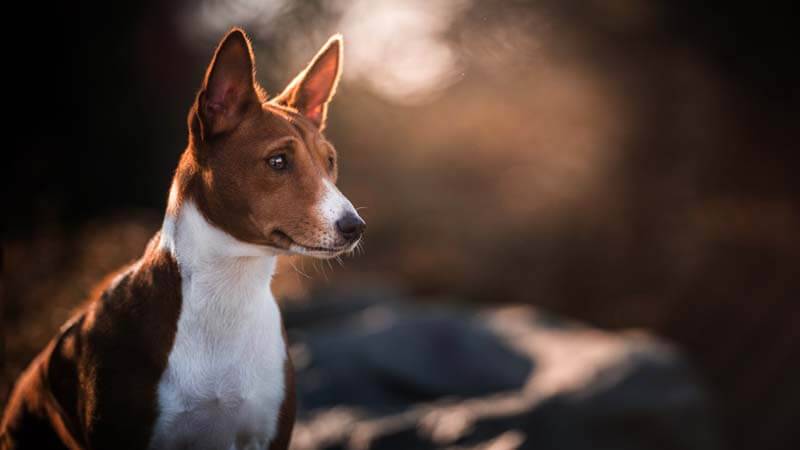
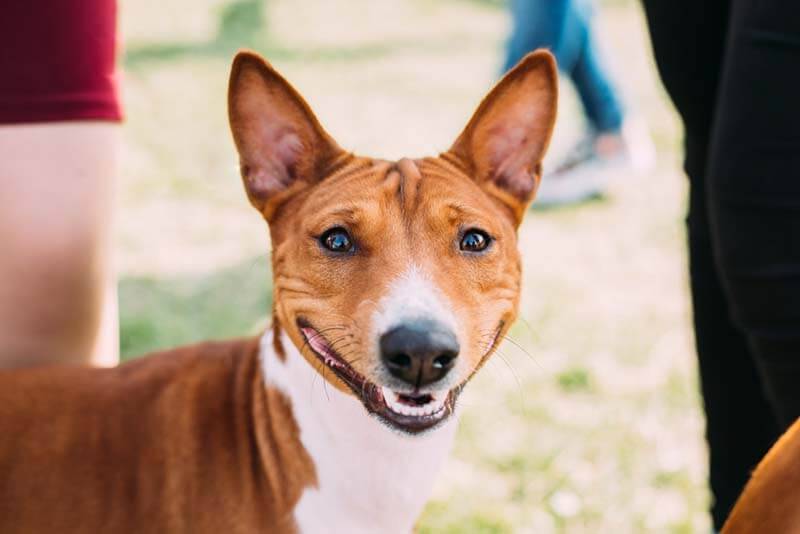
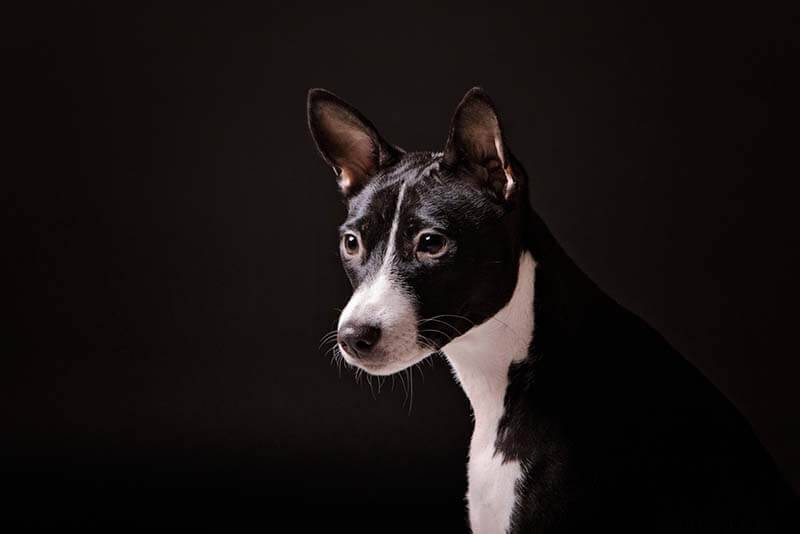
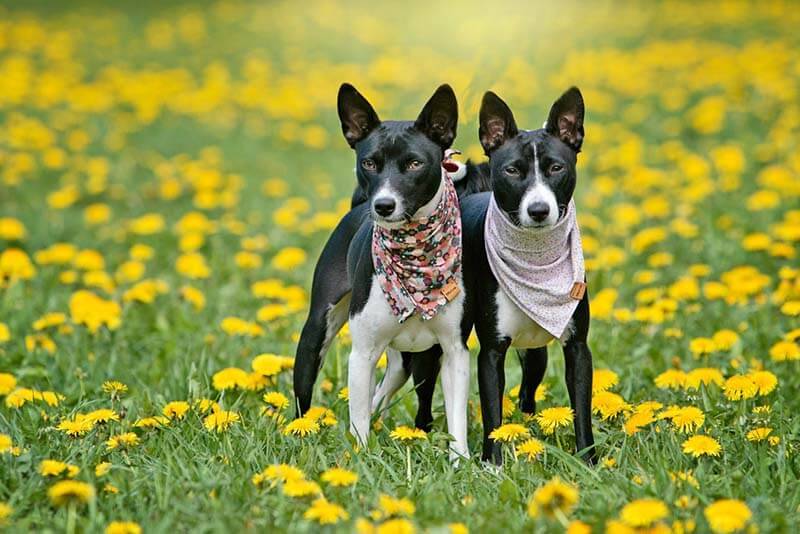
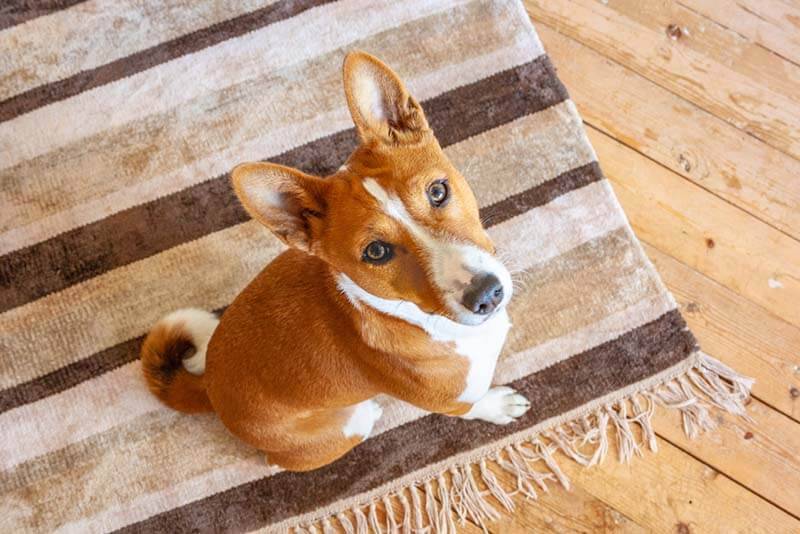
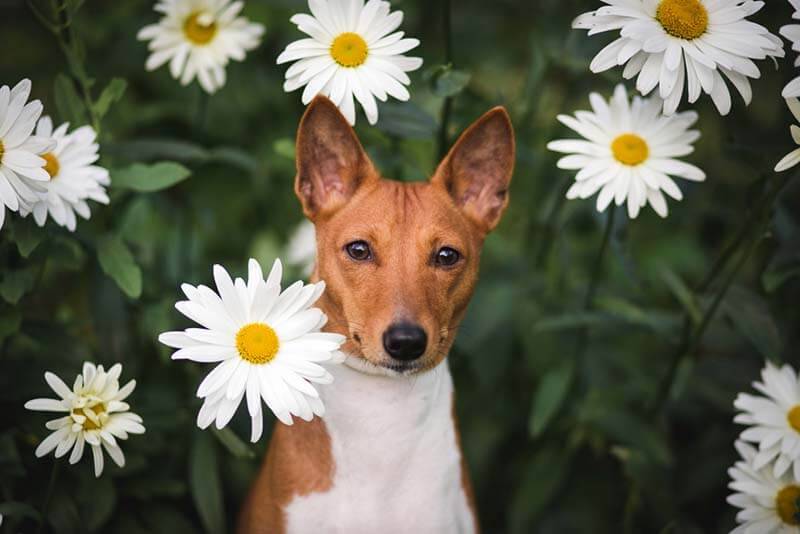
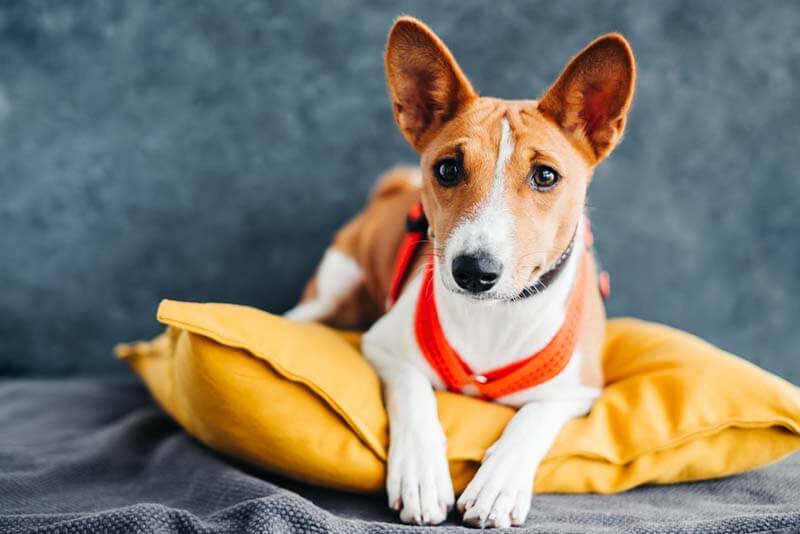
Who is this breed for?
Basenji will become a reliable friend for a patient and persistent person. It is not so easy to win the trust of this beautiful animal. Difficulties can also arise with education and training, as these dogs are not eager to learn and repeat the same commands.
The size of the dog allows you to keep it in a city apartment. But you must be prepared for frequent walks with your pet. Therefore, this breed is suitable for active people. But it is better for the inattentive to abandon the “basi”. On the street, you need to keep a close eye on her. Representatives of this breed are more prone to shoots, as well as the selection of food from the ground.
Basenji is suitable for a family with children if they have already reached school age. They can get along with other dogs as well as cats. But rodents and birds will be just another prey for them.
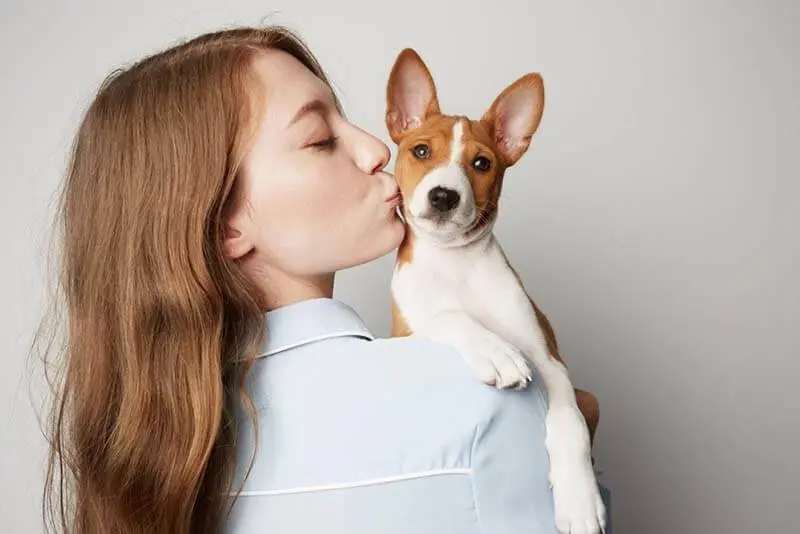
How to choose a puppy
It is naive to believe that a Basenji puppy can be found using free ads on the Internet or bought from the hands of the market. This is a fairly rare and expensive breed. Therefore, the risk of slipping a non-purebred animal on you is too great.
It is better to find a trusted breeder or specialized nursery. You can give puppies to new owners after they turn 45 days old from the moment of birth. But the first acquaintance with puppies is best arranged when they are eight weeks old.
A healthy baby will be plump, with shiny coat and eyes, clean ears. Carefully inspect the animal, it should not have any traces of discharge or bald spots on the body.
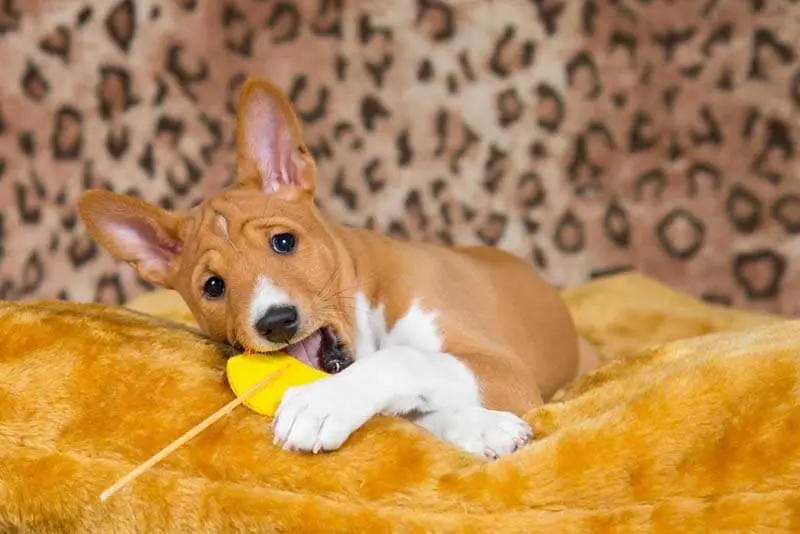
Look at the behavior of the puppy. An animal with a stable psyche does not show excessive aggression or cowardice. The dog sniffs the hands of a new person with interest, approaches him without fear and responds to the proposed game.
Pay attention to the conditions in which the puppies and their mother are kept. The bitch must receive quality nutrition. Remember that parents pass on to the litter not only their external qualities, but also character traits.
In the nursery, you must provide all the necessary documents for the puppy – this is his card and veterinary passport. Feel free to ask the breeder all the questions that come to mind. You should not be rushed to make a choice, make it consciously.
Photos of basenji puppies


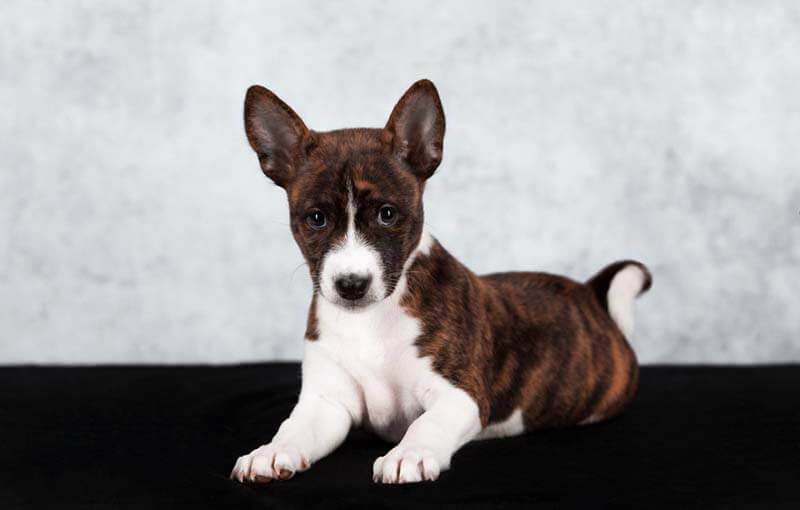
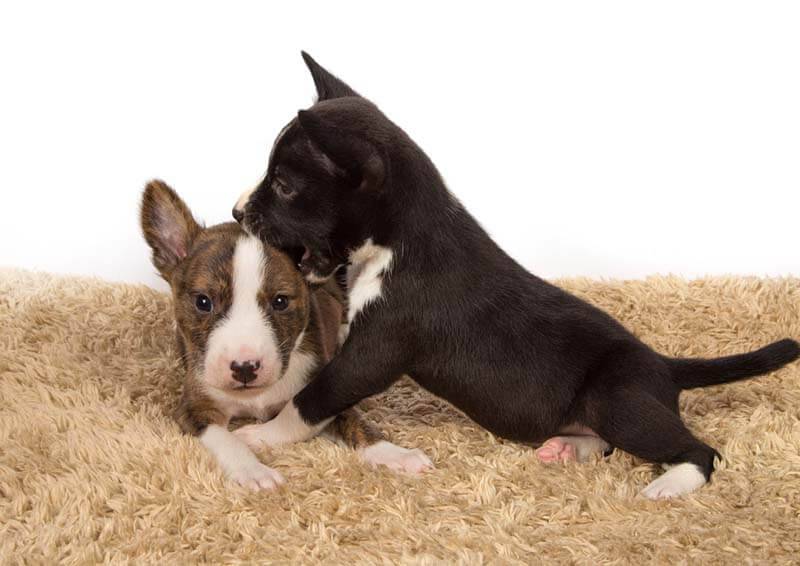

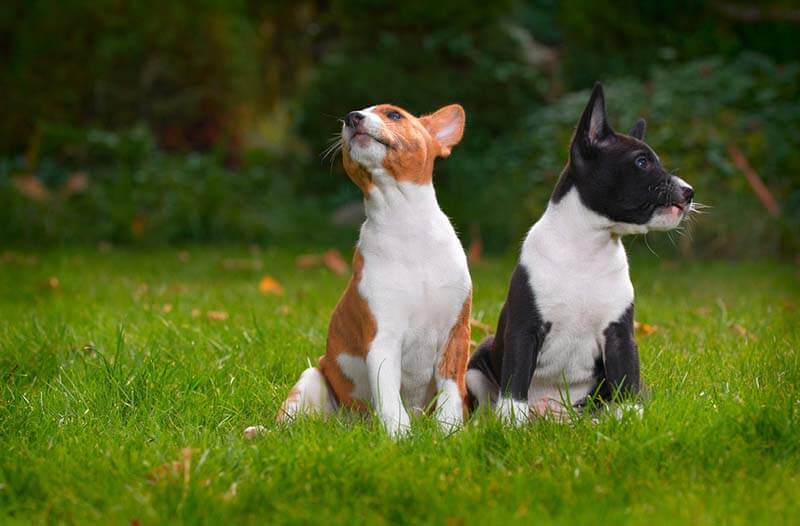
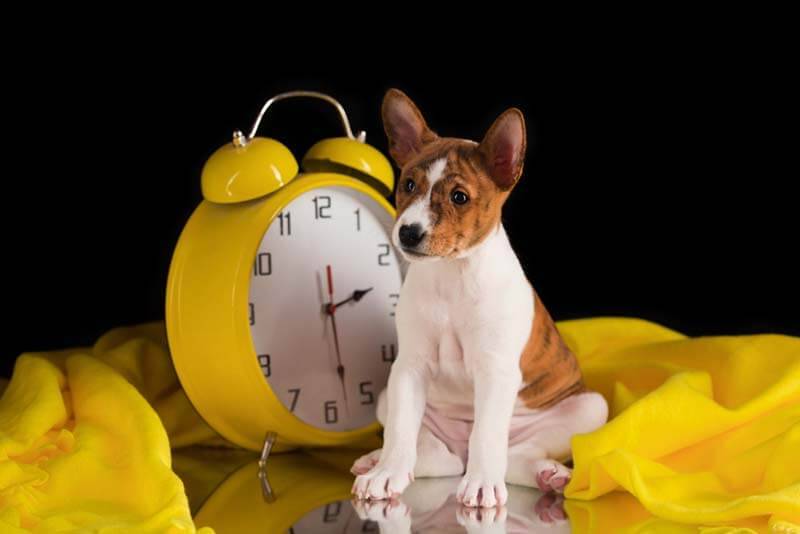
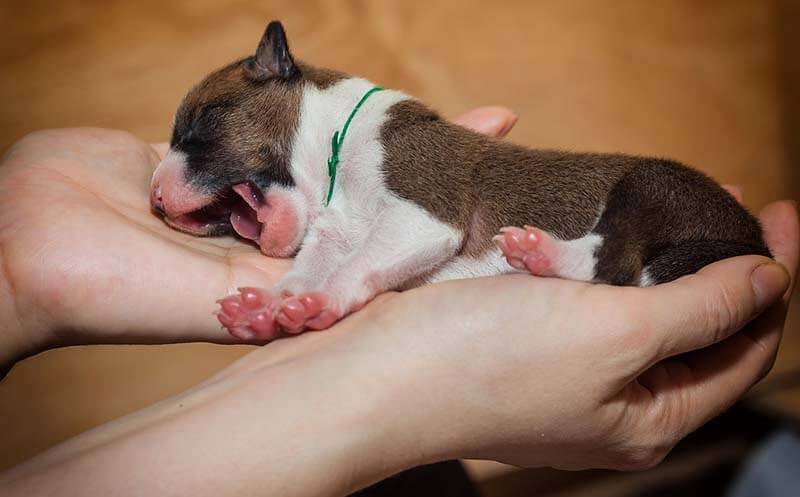


Basenji price
Since this breed has not yet become widespread in our country, the price of Basenji puppies is kept at a high level. There are not so many specialized nurseries, but they do exist. Only in them you are guaranteed the pure blood of an animal and will give documentary evidence of this.
If you decide to buy an African dog, then be prepared to pay from 1200 to 1500$ for it. The cost of a puppy will be influenced by its pedigree and exterior qualities.
If you are willing to take the risk and buy a baby without documents, then you can find an animal much cheaper. There are ads on the Internet where “basya” costs no more than 50 thousand rubles. But no one will guarantee the health and purity of such a dog.
Basenji Video



